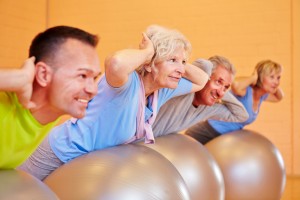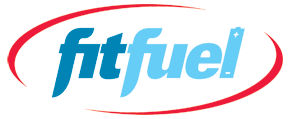Stopping age-related muscle loss: Put the brakes on the loss with strategic exercise and protein intake
By Deborah Kotz
On a January morning, Tufts University exercise physiologists guided two seniors wearing light ankle weights through leg extensions, chai r stands, and leg curls and then handed them a post-workout shake. It was part of a six-month study addressing the question: What’s the best way to reverse age-related muscle loss, which makes it hard to do such basic tasks as climb stairs, lift groceries, and walk around the block?
r stands, and leg curls and then handed them a post-workout shake. It was part of a six-month study addressing the question: What’s the best way to reverse age-related muscle loss, which makes it hard to do such basic tasks as climb stairs, lift groceries, and walk around the block?
Severe muscle loss, called sarcopenia, is gaining more attention as a disease that could be akin to bone-thinning osteoporosis, leading to immobility, falls, and perhaps earlier death as well as an estimated $20 billion a year in health care costs.
For now, researchers acknowledge, the optimal treatment is prevention: By the time we hit middle age, we should start lifting weights at least twice a week to retain our muscle. And we need to provide our bodies with a steady intake of fuel throughout the day, in the form of protein, to manufacture the lean tissue.
Beginning at age 30, most of us lose about 1 percent – or a third of a pound – of muscle every year, as the body starts tearing down old muscle at a faster rate than it builds new tissue. (It’s why world weight-lifting records for the 60-year-old age bracket are 30 percent lower in men and 50 percent lower in women compared with records in the 30-year-old bracket.) The loss of muscle, which burns more calories than fat, slows the body’s resting metabolic rate, causing us to pack on fat pounds through the years. While we can’t completely halt this aging process, researchers believe we can do a lot to slow it down, mostly through resistance training, or weight training, that targets specific muscle groups.
Diet is key, the 10 grams of protein that most of us get from cereal and milk at breakfast, he added, is not enough to get the body’s muscle-building machinery working at full throttle. For that, we would need to eat about 25 to 30 grams of protein, the amount in a three-egg cheese omelet.
A 2009 study conducted by Paddon-Jones found that this amount of protein, in the form of four ounces of lean beef, boosted the body’s muscle-building rate by 50 percent for three hours in both young and older people when it was eaten immediately after a resistance training workout. He also found that eating 12 ounces of beef didn’t provide any extra benefits.
This argues against consuming a giant porterhouse steak at dinner, while forgetting about protein the rest of the day. “It’s like trying to put 90 gallons into a 30-gallon gas tank,’’ said Paddon-Jones. “We often take in too much protein than the body can convert to muscle at any one time, so that leads to spillover, which gets stored in the body as fat.’’
While the government’s recommended dietary allowance for protein is 46 grams a day for women and 56 grams for men, evidence is mounting that seniors need nearly double that amount to avoid accelerating loss of muscle – especially if they become bedridden from a prolonged illness or injury.
Of course, you can follow the perfect diet and be an avid exerciser, yet still face muscle loss as you age. Wolfe noticed a precipitous decline in his marathon performance a few years ago when he reached his early 60s; his pace was slowing and he felt more winded during training, despite his efforts to maintain his regular fitness regimen and eat adequate protein.
Just like you can’t ultimately avoid wrinkles, gray hair, and reading glasses, growing old with less muscle is inevitable. “You just have to reset your fitness goals,’’ Wolfe said. “You might be a little slower or weaker – maybe you can’t hit that golf ball as far – but you do your best without giving up on it.’’
#standagainstweakness
